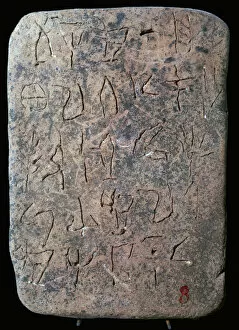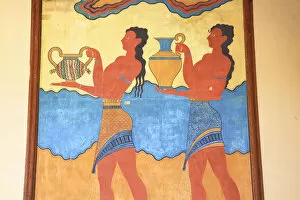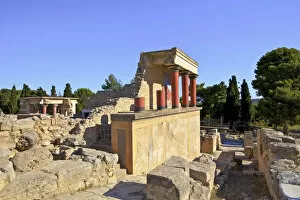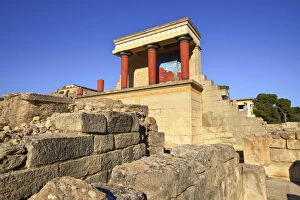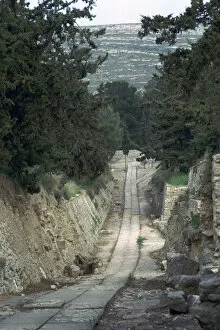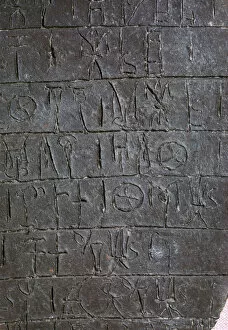Sir Arthur Evans Collection
Sir Arthur Evans was a renowned archaeologist who dedicated his life to uncovering the secrets of ancient civilizations
For sale as Licensed Images
Choose your image, Select your licence and Download the media
Sir Arthur Evans was a renowned archaeologist who dedicated his life to uncovering the secrets of ancient civilizations. His most notable discovery was the Minoan Palace of Knossos, located in Heraklion, Greece. Through meticulous excavation and research, Evans unearthed fascinating artifacts that shed light on the rich history of this once-thriving civilization. One of his remarkable findings was the Cup-Bearer Fresco in the South Propylon of Knossos. This vibrant artwork depicted a ceremonial cup-bearer holding an ornate vessel, showcasing the artistic prowess and cultural significance of the Minoans. Another captivating fresco discovered by Evans adorned the North Entrance of Knossos. It portrayed a charging bull and olive tree, symbolizing strength and fertility – key aspects of Minoan society. Tourists visiting this site can still marvel at this ancient masterpiece today. Evans' dedication to unraveling history extended beyond visual art as he also uncovered significant written records. One such example is a Mycenaean Linear A tablet found within these palace walls, providing valuable insights into their language and communication systems. In addition to grand architectural elements like The Royal Road leading to the palace, Evans also discovered smaller yet equally important artifacts like an Early Cretan libation vessel from 1933-1934. These objects offer glimpses into everyday life during that era. The impact of Sir Arthur Evans' work cannot be overstated; he revolutionized our understanding of Minoan culture through his meticulous excavations at Knossos. His discoveries continue to captivate historians and archaeologists alike, preserving an invaluable piece of human history for generations to come.

